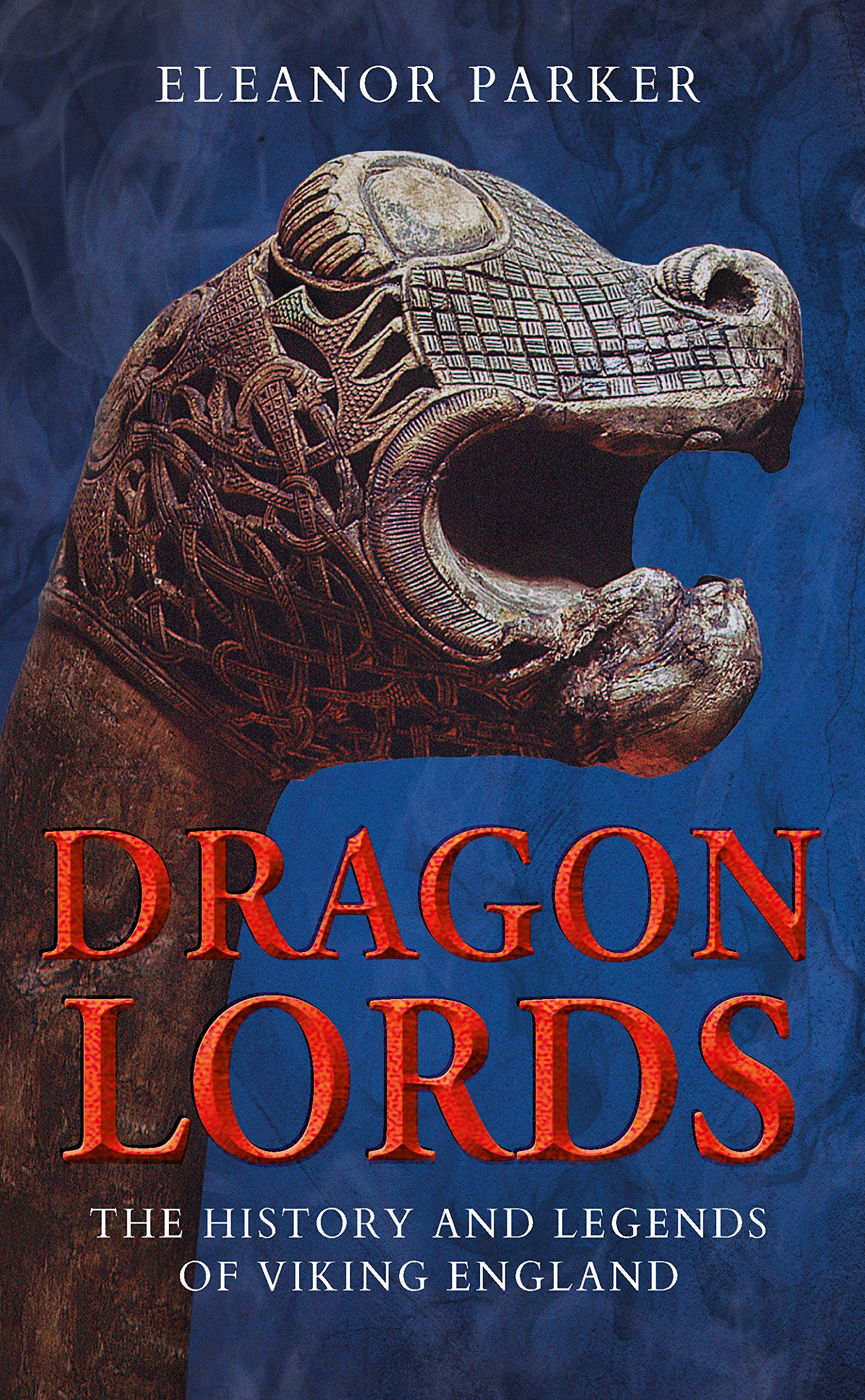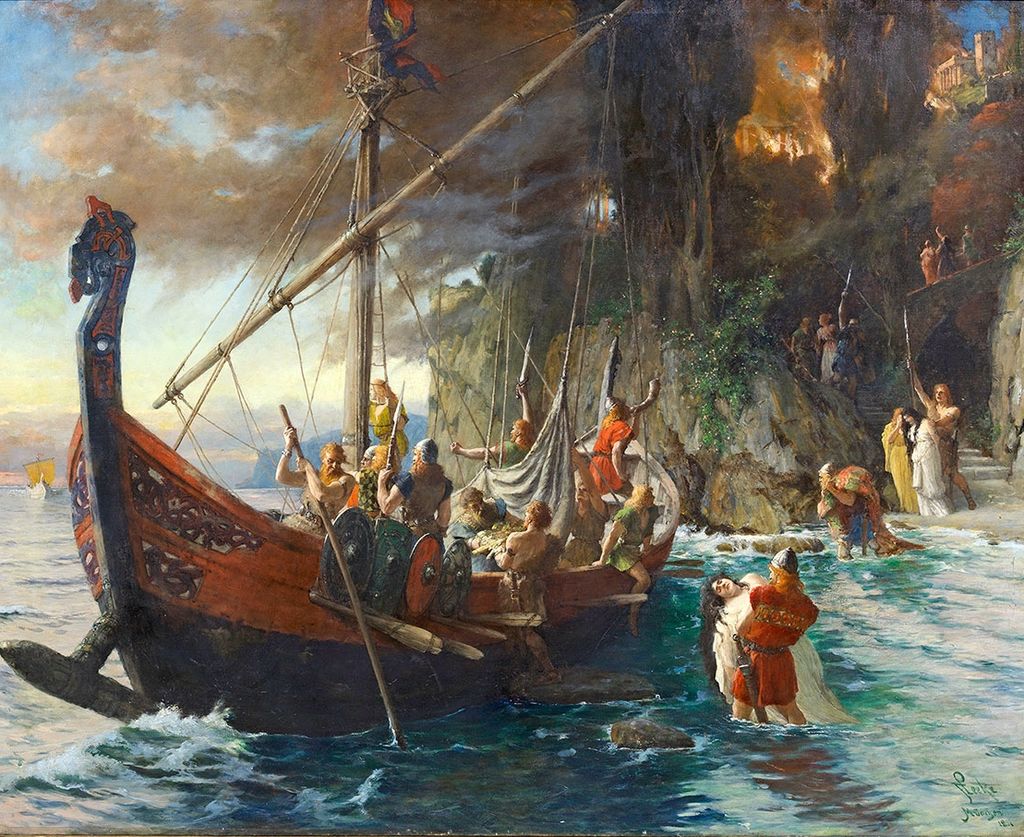Dr Eleanor Parker, internet famous (among Medievalists at least!) as A Clerk of Oxford, reveals the complex nature of the Norse invasion and settlement in her new book Dragon Lords: The History and Legends of Viking England, from the many social factors and motives buried in Medieval manuscripts, to the footprint left in folklore as meaning changed in the aftermath of the Norman Conquest.
What was the genesis of your new book Dragon Lords: The History and Legends of Viking England?
I started researching these legends a few years ago because I was interested in trying to understand how medieval writers perceived the impact of Viking settlement in England. We know that Viking settlement left some lasting effects on this country, especially in the north – many of the words we use today are of Old Norse origin, and Norse place-names can still be seen across the north of England. I wanted to find out what kinds of stories and legends were told about England’s Viking history, and what they might be able to tell us about how English audiences in the Middle Ages imagined their connection with the Vikings.
The Anglo-Saxon line on the Vikings is really characterised by the Raid on Lindisfarne and the supernatural omens of whirlwinds, dragons, thunder, lightning, and famine – followed by the “plunder and slaughter” of the “heathen men.” But what was the Norse view of Britain, what do their legends tell us about what sort of place this island was in Viking imagination? Was it a place of threat or a bento box of bounty?
Norse sagas tend to think of Britain as basically an outpost of Scandinavia, at least in the period before the Norman Conquest. They don’t really see it as a threat – to them it was a place with a history, language and culture closely linked to their own, and somewhere which had often been ruled, partly or entirely, by Scandinavian kings. (Which is true, though it probably wasn’t quite as often as the sagas claim!) There are lots of stories in Norse sagas about Scandinavian characters visiting Britain, for all kinds of reasons – often for Viking raids, but also to get involved in politics and win rewards by supporting Anglo-Saxon kings. They seem to have been very interested in the idea that the Vikings had played an important role in British history.

The gristly Martyrdom of St Edmund, which is depicted in the BBC’s Last Kingdom, is one of the more potent stories to emerge from Anglo-Saxon England in the Viking Age. Asked to renounce his faith, he’s shot through with arrows and then beheaded. From there this incredible cult emerges around St Edmund with folklore of resistance and vengeance. How did this develop and was it always seen in such binary terms as Christianity vs pagan barbarity, or natives vs invaders?
The version of the Edmund story we’re most familiar with comes from the end of the tenth century, and that definitely presents his death in black-and-white, native vs. invader terms – mostly because England at the time was dealing with a renewed threat of Viking invasion. But at other times the story was understood quite differently. The first people to venerate Edmund as a saint may have been the Vikings who had conquered East Anglia, and later the Danish king Cnut was an important patron of Edmund’s cult. Then, as Edmund became a very popular saint, a whole range of stories developed about his connection with Denmark and the reason for his death – not all of them solely blaming the Vikings!
As a sort of convenient everyNorthman Ragnar Lothbrok is an ideal protagonist for the TV show Vikings, but I was surprised to read in Dragon Lords that he cameos in English legend too. What role does this Ragnar play and what does this Anglo-Danish take on Ragnar tell us about Viking Age England?
The English version of Ragnar (who is only ever called ‘Lothbrok’ in England) is pretty different from the figure we know from Vikings! In medieval English legends, he mostly exists to explain why his sons came to attack England. The story I find most interesting is one which says that Lothbrok was an innocent man who came by chance to live at the court of Edmund of East Anglia and made friends with the king. One of Edmund’s men became jealous and murdered Lothbrok, then blamed Edmund and encouraged Lothbrok’s sons to come and avenge his death. In this legend Edmund and Lothbrok are both innocent and sympathetic, so it’s a more balanced version of the story than we are used to! It seems to suggest that some audiences in medieval England preferred to think of Viking invasion as not just mindless violence, but the result of a long-standing and complex relationship between England and Scandinavia.

I’m fascinated by this recurring motif you identify with real or folkloric individuals being given bear or man-bear ancestry. What’s the purpose of this particular myth?
This seems to have been a popular legend in Scandinavia – it comes up in several Old Norse sagas, and in England people seem to have particularly associated it with Scandinavian story-telling. The bear is a powerful animal, and you can easily imagine a strong warrior being compared to a bear – for instance, there may be a connection between bears and Viking ‘berserkers’. I suppose the idea of having a bear as your ancestor suggests a kind of hereditary ferocity and wildness, a strain of something much stronger and fiercer than ordinary human nature, and therefore potentially pretty terrifying.
I used to live in North Lincolnshire so I grew up surrounded by these wonderful Old Norse place names, but I knew nothing of Havelock and Grim. How important was this shared heritage to the North East and the East Midlands?
The legend of Havelok and Grim was hugely important in north-east Lincolnshire, especially in Lincoln and Grimsby. There’s no obvious historical basis for the story, but Havelok was widely believed to have been a young Danish prince who also became king of England. As a child, his life was saved by Grim, a fisherman who fled to England from Denmark and founded the town of Grimsby, which was named after him.
This was a popular local legend – the medieval town seal of Grimsby proudly depicted Grim, Havelok and his wife Goldburh, and one 14th-century writer records that in Lincoln Castle visitors used to be shown the chapel where Havelok and Goldburh were married, and ‘Havelok’s stone’ which he threw in a stone-casting competition. They were tourist attractions! But this legend also gave Lincolnshire a distinguished past and explained its history of Viking settlement, a legacy which can still be seen in the many Norse place-names in the area.
I can’t not ask about Dane’s skin either. Can you explain about this particularly gruesome bit of folklore and what it means?
Yes, this is quite strange! This is a story attached to a number of churches in England, where it was said that the door was covered with the tanned skin of a Danish pirate who had been caught stealing from the church. Most likely, it was just animal leather. But it shows how ready people were to tell stories about the Vikings and come up with legends connecting local features and landmarks with (real or imaginary) Viking history.
Dragon Lords: The History and Legends of Viking England by Dr Eleanor Parker is out 7 June from IB Taurus. You can find more of her writing at A Clerk of Oxford. More more Medieval magic and weirdness, subscribe to All About History from as little as £13.
